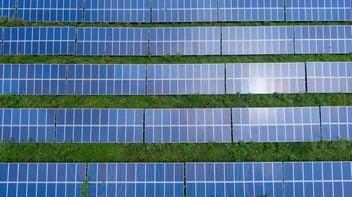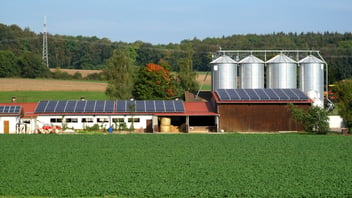True or False? 5 Facts You Thought Were a Myth About Community Solar
).jpg?width=960&height=540&name=Untitled%20(Presentation%20(169)).jpg) With the rise in popularity of community solar, due to both increased consumer demand and government incentives for renewable energy, consumers stand to gain quick and easy savings. But the energy industry hasn’t been traditionally transparent, so what’s true and what’s a myth? Below we run through some of the most misunderstood takes on community solar and break down the difference between what’s real and what’s fake.
With the rise in popularity of community solar, due to both increased consumer demand and government incentives for renewable energy, consumers stand to gain quick and easy savings. But the energy industry hasn’t been traditionally transparent, so what’s true and what’s a myth? Below we run through some of the most misunderstood takes on community solar and break down the difference between what’s real and what’s fake.
Myth - Community solar can’t possibly be free for me, there must be a catch!
Fact: Yes, community solar through Catalyst Power is free for the subscriber at least. A private company has taken the initiative to build a utility-scale solar array nearby and provide power to the grid. That solar builder is compensated by government incentives associated with local businesses who have subscribed to the array (that’s you!). President Biden’s plan to scale up clean energy by 2030 means the government wants more renewables. Making community solar cost money means fewer people will feel inclined to give it a chance. Offering community solar is one of the simplest ways to achieve this objective at scale. Once you subscribe to a community solar project with Catalyst Power, you start receiving credits on your utility bill that can represent up to a 10% discount. Since the solar builder owns the array on their own land, you aren’t responsible for anything, except admiring that sweet discount.
Myth - I don’t want to rely on unreliable solar power to power my home or business, so I can’t use community solar.
Fact: The electricity generated by the community solar array doesn’t feed directly into your building, so a community solar subscription won’t save you in a grid failure. It functions as an offset; you are authorizing the utility to offset your energy consumption by buying back clean energy from a community solar project to replace it, not supply it. Community solar takes all that renewable energy and sends it back into the grid, where multiple customers like you and your business, residential homes, and other neighbors in nearby buildings can use it. The credits you receive from the solar farm show up on your monthly utility bill. You get guaranteed energy savings every month but are still connected to – and receive your power from – the grid.
Myth - I won’t always get a discount; it is bound to increase my bill sometimes and I can’t do that.
Fact: The length of benefit can vary from solar array to solar array, but a subscription through Catalyst Power is typically 20 years (no early termination penalty – easy come, easy go), so you’ll receive your monthly discount for the life of the contract.
Myth - If there are blank margins on my contract, that means I’m being set up to have things changed on me.
Fact: The blank margins on your contract are to be filled in by the project owner and are only relevant to the utility and that company. The important margins for you are clear-cut. Even if your contract asks you to commit for 20 years, you can always opt-out of your contract at any time if you provide a 90 days’ notice. The time is just the length of service for the panels, not your subscription. Catalyst Power offers community solar services and can guide you through the steps of what to look out for in your contract.
Myth - Solar farms aren't environmentally friendly.
Fact: The beauty of community solar is its ability to reduce the environmental impacts of the power we use today that is generated by fossil fuels. That means fewer air pollutants, greenhouse gas emissions, and other harmful effects of climate change. Solar panels do not emit any pollution and considering the changes being made to end-of-life management for solar panels, solar equipment can be recycled once it reaches its full use.
The bottom line.
The only catch with community solar is all the benefits you receive for subscribing your business to a local solar farm! You opt into a successful solar project and gain a smaller energy bill with a reduced carbon footprint. It is a sound energy strategy for your business and an honest investment your community will thank you for.



